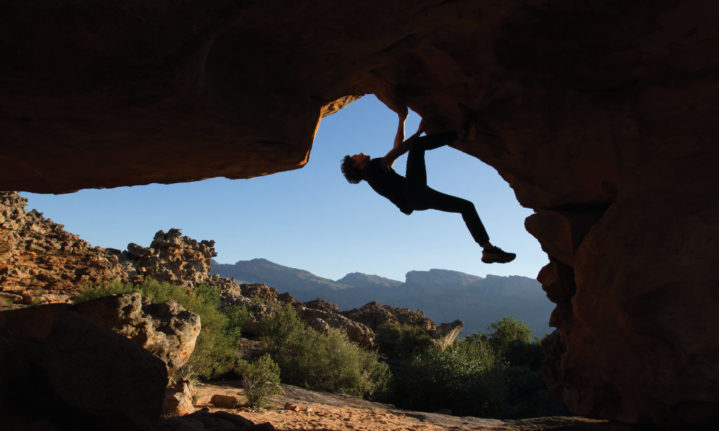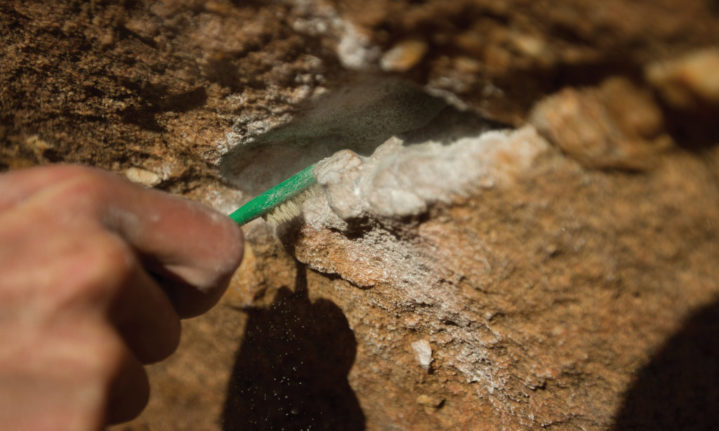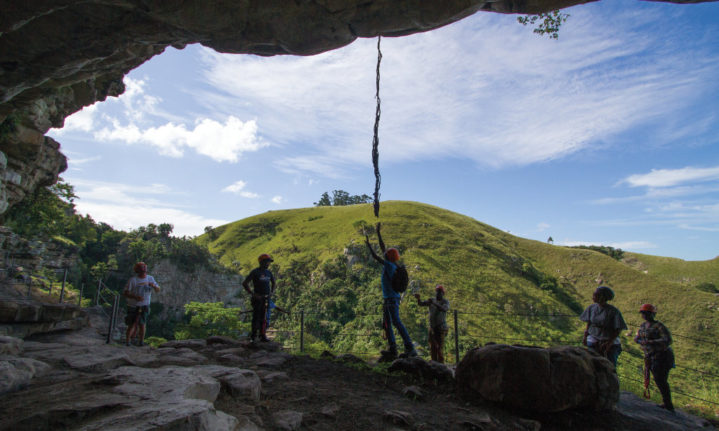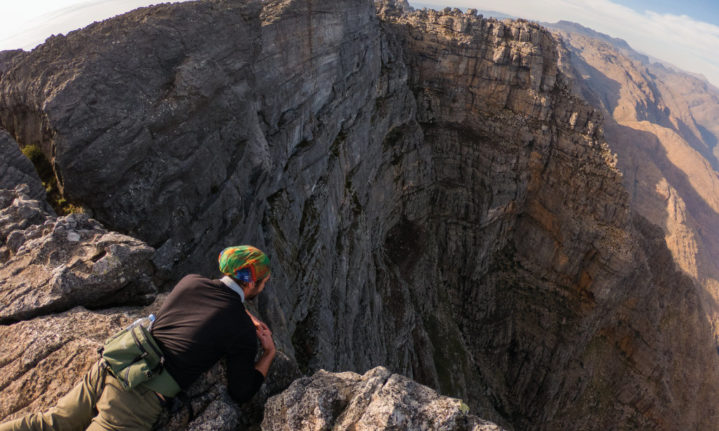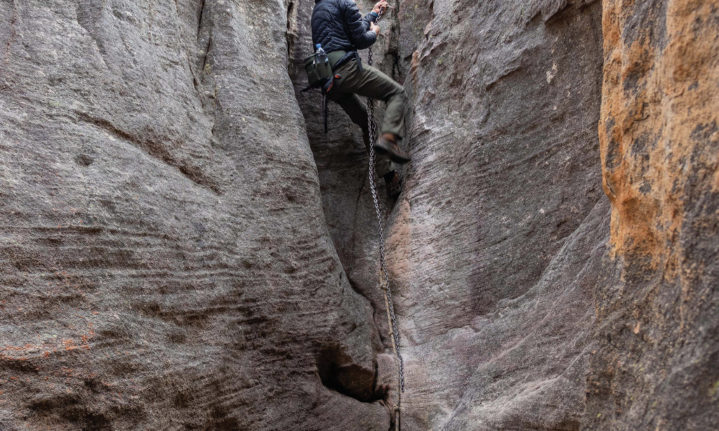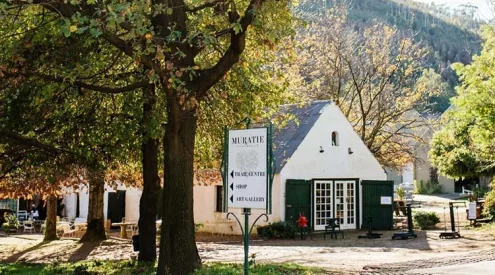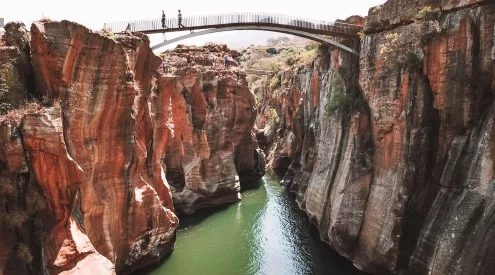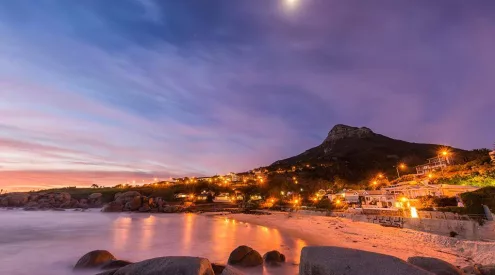The Cederberg’s Rocklands is revered as one of the best bouldering spots in the world, MATTHEW STERNE went to see what they chalk that up to.
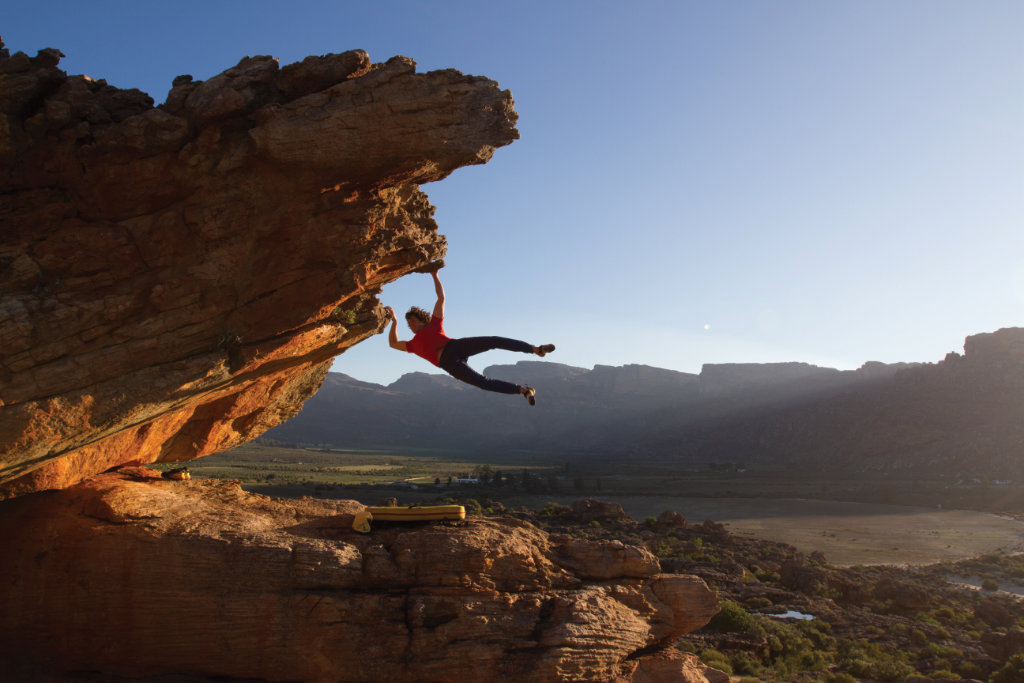
David Naudé has been doing acrobatics at Rocklands since he was 13 years old.
Fact
The sport of rock climbing will make its first
appearance at the Olympics in Tokyo 2021, incorporating three disciplines: lead climbing, speed climbing and bouldering.
Sunrise in the Cederberg and a misty chill hangs over the ochre mountains. The sound of a crash mat slapped on rock rings out through the valley. A boar-hair brush scrapes against a boulder, removing chalk and sediment from hand holds. Boots are tapped on the floor removing small stones from the soles. Two quick claps and a puff of chalk floats up, a lonely cloud in this mountain air so clean you feel like you could drink it. David Naudé is tackling Black Velvet this morning, an 8A climb that is relatively short, just four or five robust moves. The route is incomprehensible to me and impossible for the uninitiated but for David, a 19-year-old Olympic hopeful, the challenge is well within his reach. He sizes up the route, claps again with intent and approaches the boulder.

There are over 4 000 boulder problems in Rocklands.
We’re in Rocklands, a 60km-long section of the Cederberg, considered one of the best places in the world for bouldering. The whole ethos of this form of rock climbing is around doing short technical climbs only a few metres off the ground. This no-ropes discipline is not just about flexibility and upper-body strength but about puzzle solving, figuring out the precise combination of movements that will unlock a complex route. ‘Bouldering is the purest form of climbing,’ David tells me. ‘You’re not relying on gear or anyone else. It’s just you, your shoes and your chalk, and you have to get to the top.’
Perhaps it’s the accessibility and social aspect of bouldering – while you rest, your buddy can have a go – that has seen its popularity surge in the last few decades. But the nature of the climbs are also key. ‘It’s an awesome mental and physical challenge,’ David says.
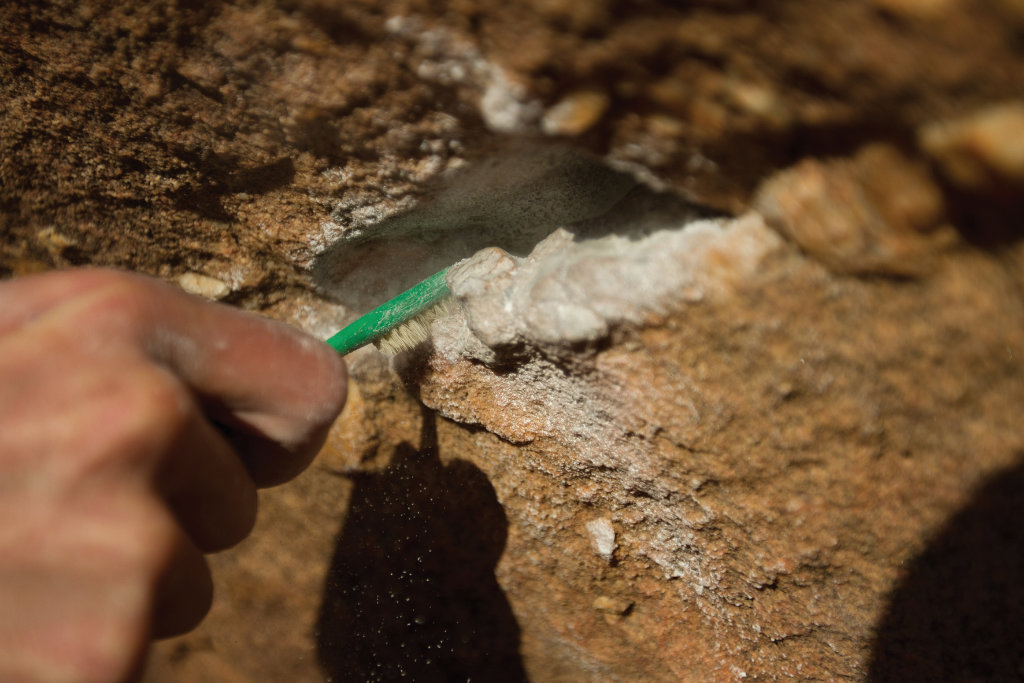
Climbers use brushes to clean holds and get better grip.
Why is Rocklands such a superb bouldering spot? Firstly, the sheer number of rocks – ranging in size from Minis to school buses – is staggering. This is due to 300 million years of erosion, an exceptionally long time for any mountain range. The current Cape Fold Mountains are only a portion of what they used to be – the boulders are the crumbs of a very big biscuit. There are over 4 000 routes but more climbs are being discovered. ‘It would take many lifetimes to climb them all,’ says David. Secondly, the boulders are very featured and offer good grips; the boulder ‘problems’ range from easy to near impossible, so there’s something for every level of climber. Thirdly, the sandstone is near bulletproof, more than strong enough to hold the climbers.
The endless fields of boulders and snarled formations resembling totem poles, rhinos and dancing monkeys have beckoned climbers from around the world since 1996, when Todd Skinner, Fred Nicole, and others began documenting the area. As word got out, an ever-growing number of climbers visited the mountains, traipsing through fynbos and asking local farmers if they could boulder on their rocks, often leading to blank stares.

There are a number of different types of grips boulderers use, each with their own name.
‘One weekend in 2004, these guys who looked like surfers came and asked if they could look at the boulders,’ Thys Kruger, owner of de Pakhuys, says. ‘They stayed three months and from there it just snowballed. Last year we had around 3 000 people stay here during climbing season and 90% were from overseas. On any given day we’d have about 120 people in the campsite. And there’s a wonderful sense of community. There are always people on slacklines or riding unicycles, and the bar is busy every night. The look they get when they come over the pass, it’s like they’re in heaven.’ I likened it to discovering diamonds on his farm and he agreed. ‘The valley used to survive on subsistence farming and now everyone in this region’s primary income is from tourism.’
David takes a step back and looks at the boulder quizzically, like an artist putting the finishing touches on an important piece. While his body rests, his mind works. Could my foot go there? What if I tried that? Is that even possible? ‘It comes down to small things like timing your rests or waiting for the breeze to blow, it becomes very tactical,’ he says. ‘To apply yourself to a hard problem and succeed, there’s no better feeling in the world. If you’re motivated enough, you can climb anything.’
Where to stay
The following three accommodation options all offer bouldering on their properties.
De Pakhuys is the central hub for boulderers with a variety of accommodation options spread over the farm. Camping R100 pp per night cabins from R225 pp per night. 027 482 1879, depakhuys.com
Traveller’s Rest offers comfortable huts and cottages and is also home to the rock art tour. From R175 pp per night. 027 482 1824, travellersrest.co.za
Kleinfontein has self-catering farm accommodation. Camping R80 pp per night, chalets from R325 pp per night.
When to go
The best time to go is in winter when the cooler temperatures mean better friction between you and the rock and you’re less likely to overheat.
Where to practice
Climbing gyms are a great place to get into the sport, meet other climbers and tap into the culture.
Western Cape
Bloc 11:
Paarden Eiland
021 510 2454,
bloc11.co.za
CityROCK
: Paarden Eiland
021 447 1326,
cityrock.co.za
Hangtime Gym
: Bellville
074 134 8981,
hangtime.co.za
Gauteng
CityROCK:
Randburg
010 007 2732,
cityrock.co.za
The Barn Indoor
Climbing Gym:
Pretoria
082 335 3220,
climbingbarn.co.za
Rock Valley
: Centurion
071 363 1720,
rockvalley.co.za
Kwa-zulu Natal
Southern Rock
Climbing Centre:
New Germany
031 705 3842
, srockgym.co.za
Eastern Cape
Valley Crag:
Port Elizabeth
082 576 4623
, valleycrag.co.za
How to get there
Take the N1 out of Cape Town before following the N7 to Clanwilliam. Go through the town and over the Pakhuis Pass on the R364 to get to Rocklands – about three and a half hours
Caving on a Wire
Descending by way of the via ferrata system, CATHERINE HOFMEYR looks into a newly discovered San hideout on the KZN South Coast
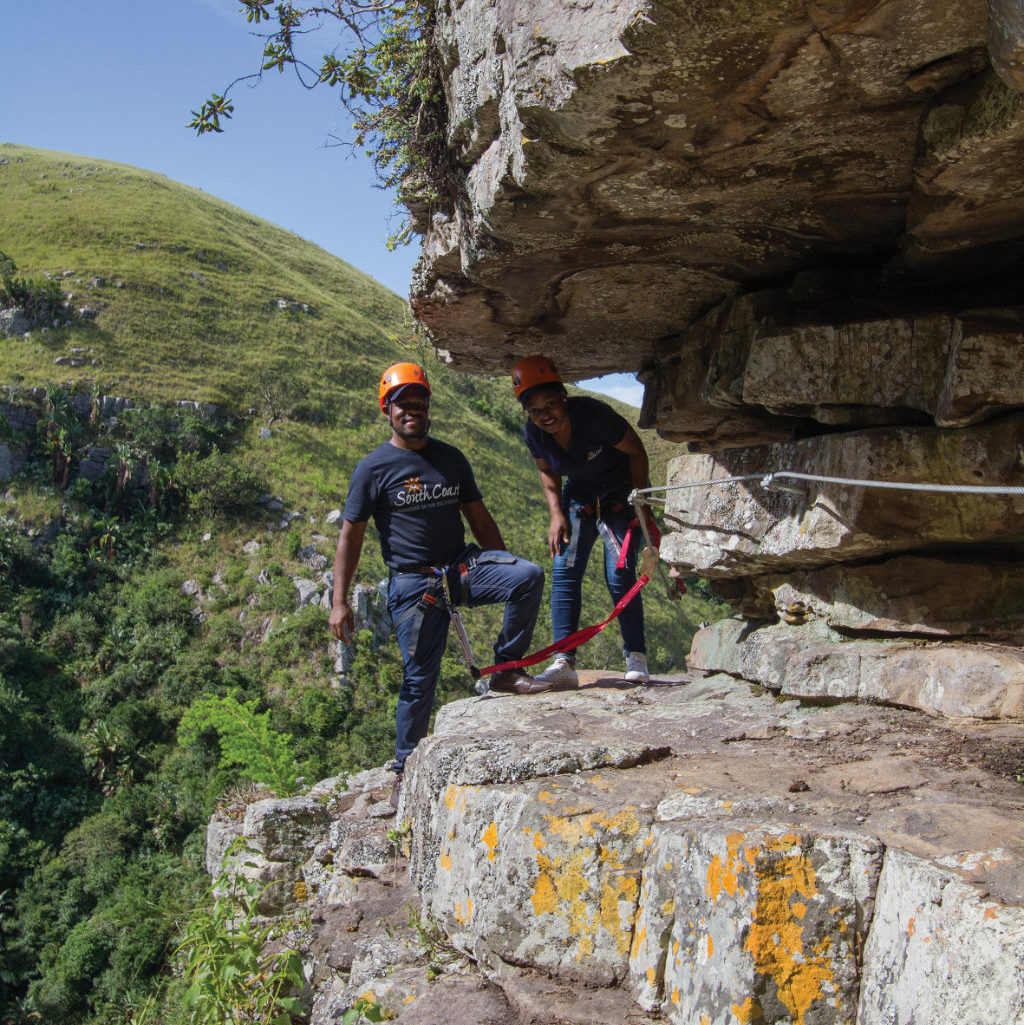
Members of Ugu South Coast Tourismput the safety cable to the test.
Perched on the side of a deep gorge, the caves at KwaXolo have been around for 100 000 years. But because of their inaccessibility, only the San, and more recently, hardy goat herders and intrepid explorers from the KwaNzimakwe community ever knew about them.
Visitors can now access the caves, inland of Margate on the KZN South Coast, by way of an ingenious system of harnesses and cables. KwaXolo Cave Adventures combines historical, cultural and community tourism with a bit of adrenalin, and was all set to open to the public in April. Just before lockdown, I joined other journalists and tour operators on a guided ‘guinea pig’ expedition.
Operator Shaun Makhanya and administrator Khosi Mashala met us at the start station where we were all buckled into harnesses and fitted with helmets. Views of a waterfall and deep gorge unfolded as we set off down the path. Then guides Nomvula Mabandi and Musa Ntaka showed us how to attach our two safety lines onto a fixed cable.

KwaXalo Cave – those San sure knew how to pick a pad with a view.
Used extensively in the European Alps, it’s called the via ferrata system (‘iron way’ in Italian) and is basically a climbing route that uses steel cables and rungs fixed to the rock to keep hikers safe on precarious mountain paths. The engineers that designed the Wild Swing at Oribi Gorge assisted with all the technical aspects of laying out this 300m ‘cableway’.
We descended into the gorge, negotiating round a rocky outcrop and into the deep overhang itself. What a view those San must have enjoyed. Sculptured San figures depict the life of centuries ago and we could clearly see the faded dabblings of ancient shamans.
After resting and exploring the large cave fully, we clipped on again and climbed up to where drinks and fruit were waiting as we stepped out of our harnesses and compared impressions of this new tourist activity. Well, I certainly raised a sweat and had heaps of fun.
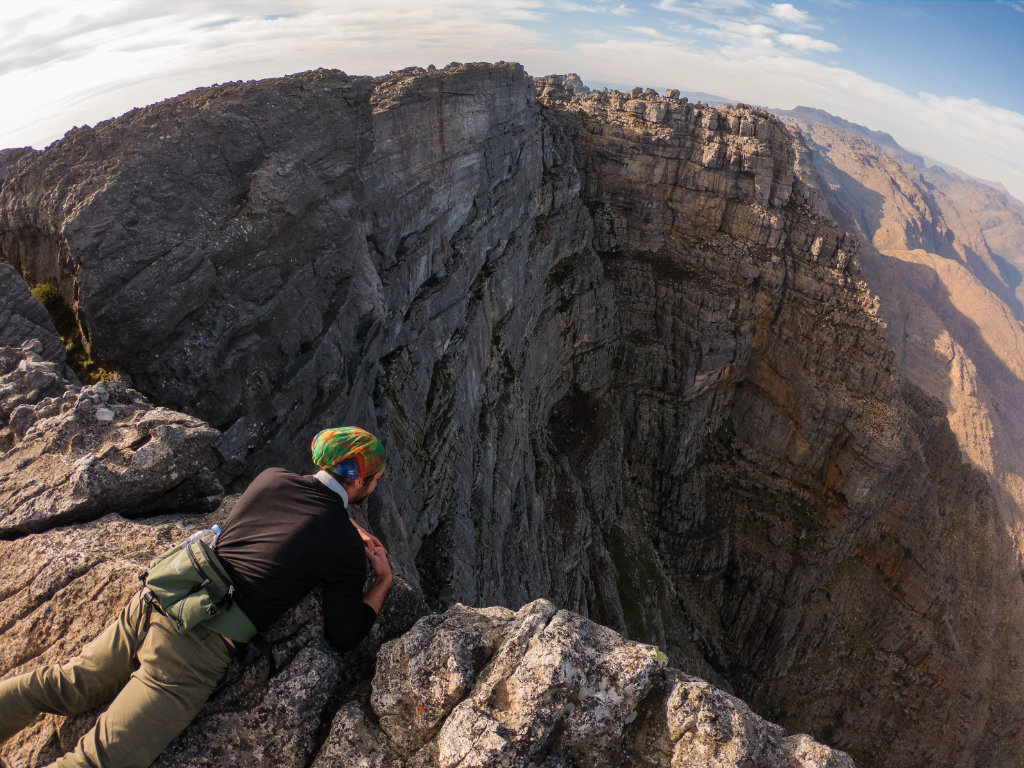
Staring down the stomach churning abyss from the top of Groot Krakadouw Peak.
More Great Escapes
Have you heard of the Cederberg Grand Traverse?
Do It
It’s a short trail but there’s a bit of rock scrambling that needs some armwork and a head for heights. R80 pp for the roughly two hour expedition; Khosi: 072 208 7855; Shaun: 074 887 3742. Find it on Facebook.
Inspired by the Drakensberg Grand Traverse, hiking adventurer and co-founder of hikingsouthafrica.co.za, Arno van der Heever, and six friends set off on a unique trip through the Cederberg last year. ‘Many people have walked the length of the Cederberg in many different ways but the “Grand” part comes about from certain peaks you have to tick along the way, which adds a lot of meat to it,’ says Arno. ‘It forces you to explore areas of the Cederberg that you wouldn’t normally see because they’re so out of the way, but those spots are often where the true magic is,’ he adds.
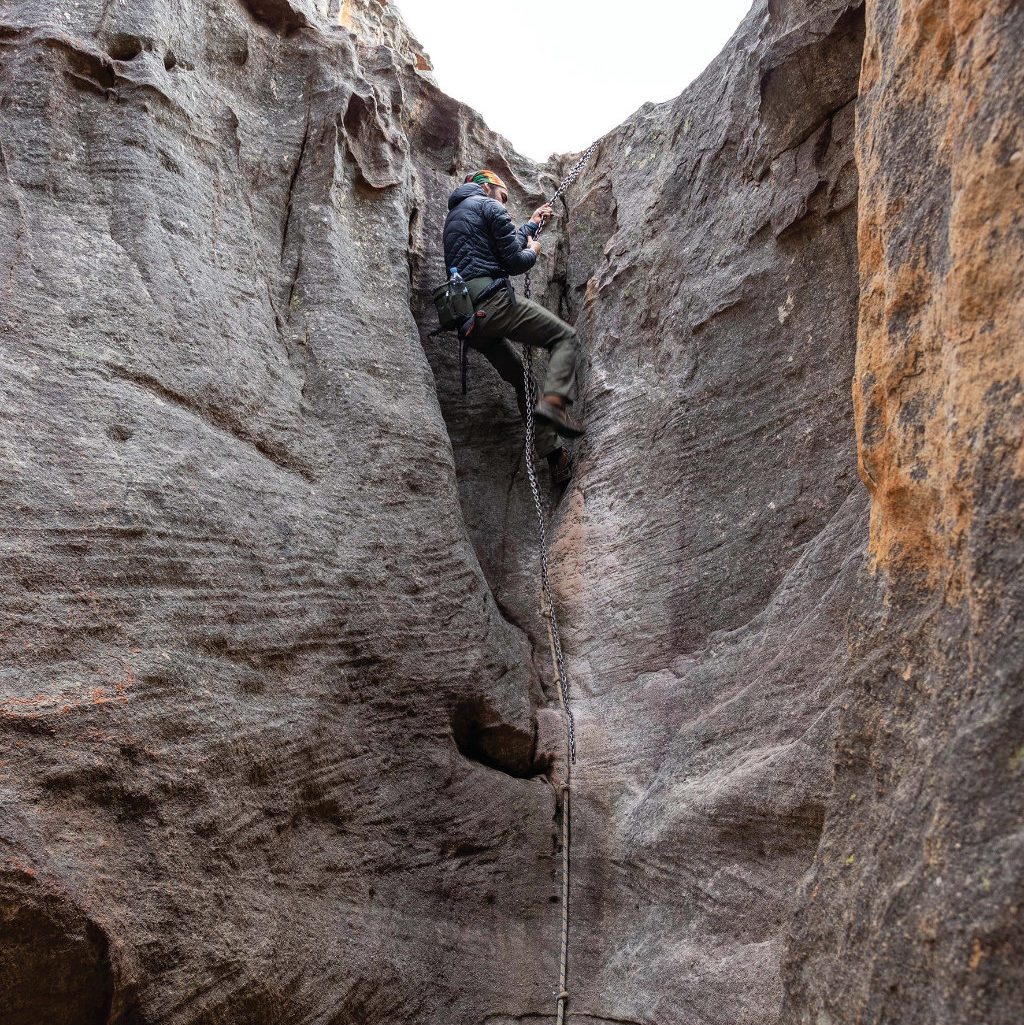
Starting on Pakhuis Pass in the Northern Cederberg and sleeping in tents as they went, Arno’s crew took a week to reach Sanddrif campsite further south, summiting Krakadouw Peak, Sneeukop, Tafelberg and Sneeuberg along the way. ‘The Cederberg, with its clear, well-marked trails, has a way of lulling you into a false sense of security,’ Arno says. ‘It’s a wilderness area and still has places that are so wild and maze-like that if you don’t know how to read a map or use a GPS you will get horribly lost and no one will ever find you. So you need to be 100% self-sufficient. And remember to leave no trace and keep it wild.’
Keen for kloofing?
Canyoning, known as kloofing in South Africa, is one of the world’s fastest growing adventure sports. The sport gets outdoor enthusiasts into their wetsuits and out of their comfort zones as they explore rivers, gorges and other parts of nature normally deemed inaccessible. Like caving and mountaineering, it started as an exploration sport and is basically the descent of a river system or gorge using various techniques and methods. It involves moving through a canyon by walking, scrambling, rope-assisted activities, climbing, tubing or swimming – quite often all thrown together.
From the Garden Route to Mpumalanga there are a number of rivers ideal for kloofing. It’s important to go with a trusted operator. Get in touch with these guys for a real adventure.
Go Kloofing with the pros
The Mountain Guide
operates in Magaliesburg,
from R850 pp.
082 652 1490,
mountainguide.
co.za
Magoebaskloof
Adventures
operates on the Greater Letaba River in Limpopo, R475 pp.
083 866 1546, magoebaskloofadventures.co.za
Paradise Adventures
operates in the Garden Route area, from R600 pp.
082 764 3112,
paradiseadventures.
co.za
Africanyon Adventures
operates in The Crags near Plettenberg Bay, from R725 pp.
082 323 4349,
africanyon.com
Frixion Adventures
operates in Du Toits Kloof and Suicide Gorge, Western Cape, from R1 200 pp.
076 442 7244, frixion.co.za










